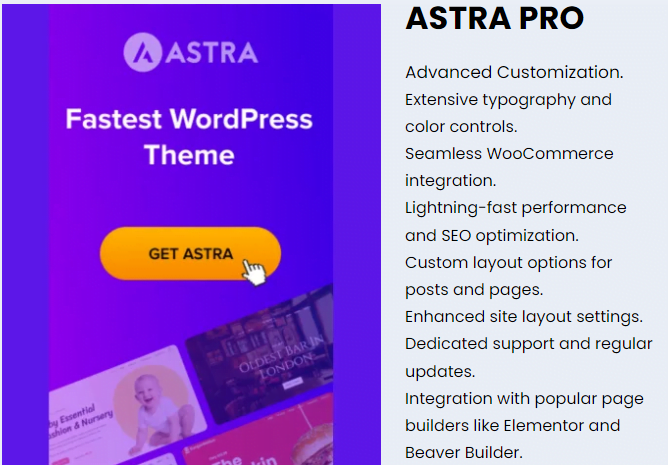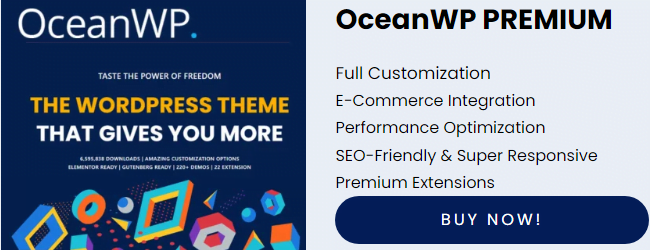67 min read

Affiliate marketing is a versatile and lucrative opportunity to generate passive income online. It is also a popular way for businesses to acquire new customers and sales.
The Entire Article at-a- Glance
Starting affiliate marketing without an audience in 2023 can be challenging, but it’s possible with the right strategies. Here’s a quick overview of the steps to get started:
- Step 1: Choosing the Right Niche: Select a niche that interests you and has a potential audience. Research popular niches and products.
- Step 2: Market Research: Identify your target audience’s needs, pain points, and preferences. Understand your competitors and their strategies.
- Step 3: Building a Website/Blog: While you may not have an audience yet, having a website is crucial for establishing your online presence. Create a professional website or blog that showcases your niche and serves as a platform to share valuable content related to your chosen products or services.
- Step 4: Affiliate Program Selection: Join reputable affiliate programs or networks relevant to your niche. Consider factors like commission rates, product quality, and affiliate support.
- Step 5: Content Creation Strategy: Produce high-quality content that provides value to your target audience. Focus on solving problems and addressing their interests.
- Step 6: SEO and Organic Traffic Generation: Learn basic SEO techniques to improve your content’s visibility on search engines. Use relevant keywords and optimize your content for search rankings.
- Step 7: Promote Affiliate Products: Integrate affiliate links naturally within your content. Write product reviews, tutorials, or comparison articles. Disclose your affiliate relationships transparently.
- Step 8: Email Marketing for Audience Growth: Start building an email list from day one. Offer incentives such as eBooks or guides to encourage visitors to subscribe. Implement email marketing campaigns to nurture leads and promote affiliate products.
- Step 9: Social Media Utilization: Share your content on social platforms to reach a broader audience. Engage with your followers and build a community.
- Step 10: Guest Posting and Outreach: Contribute guest posts to other blogs or websites in your niche.
- Step 11: Paid Advertising Strategies: Consider using paid advertising (e.g., Facebook Ads, Google Ads) to drive targeted traffic to your content.
- Step 12: Networking and Collaboration: Collaborate with other affiliate marketers, bloggers, or influencers in your niche. Joint ventures and collaborations can help you tap into existing audiences and increase your reach.
- Step 13: Measuring Success and Adjusting Strategies: Use tracking tools and analytics to monitor the performance of your affiliate campaigns. Analyze what works and what doesn’t, and make data-driven adjustments to optimize your strategy.
- Step 14: Diversify Income Sources: As your audience grows, explore additional monetization strategies such as sponsored content, selling your products or services, offering consulting or coaching, or hosting webinars.
- Step 15: Scaling Your Efforts: As your affiliate marketing efforts gain traction, scale up your activities. Continue creating valuable content, expanding your reach, and exploring new affiliate opportunities.
- Step 16: Ethical Considerations, Compliance, and Disclosure: Ensure transparency and follow guidelines for disclosing affiliate relationships to your audience.
- Step 17: Staying Updated and Continuous Learning: Stay updated with industry trends and marketing techniques. Invest in your knowledge and skills.
- Step 18: Patience and Persistence: Affiliate marketing takes time to gain traction. Be patient and consistent in your efforts.
Remember that success in affiliate marketing usually doesn’t happen overnight. Building trust with your audience, creating valuable content, and optimizing your strategies are keys to long-term success.
You are now more than welcome to explore each step in-depth in the following sections.
Let’s get started…
Introduction
Affiliate marketing is still an exemplary instance of potential and innovation in the dynamic world of digital enterprise, particularly as we go towards 2023. This year, affiliate marketing is more than simply a technique to make money online; it’s a dynamic tactic that has the potential to empower both people and companies. But what if you begin this adventure with an empty auditorium and no apparent audience? Fear not; this article unveils the art of ‘Affiliate Marketing Without an Audience,’ a strategic approach that holds tremendous promise.
Importance of Affiliate Marketing
In 2023, affiliate marketing has evolved into a critical player in the online business landscape. As e-commerce and digital product consumption continue to surge, affiliate marketing serves as the bridge connecting customers with the products and services they seek. With its performance-based model and limitless scalability, it’s no surprise that individuals and companies alike are turning to affiliate marketing to drive revenue and achieve their financial goals.
Starting affiliate marketing without an audience may be challenging, but with the right strategies, dedication, and a willingness to learn and adapt, you can gradually build your online presence and become a successful affiliate marketer over time. Remember that success in affiliate marketing often comes through a combination of skills, persistence, and a deep understanding of your chosen niche.
In this comprehensive guide, we will discuss the art of Affiliate Marketing Without an Audience in detail. We’ll walk you through the essential steps to kickstart your affiliate marketing journey, even if you’re starting from scratch. From niche selection and content creation to SEO optimization and leveraging social media, we’ll equip you with practical strategies and actionable insights. Whether you’re an individual looking to monetize your passion or a business seeking to diversify income streams, this article is your roadmap to success in the realm of affiliate marketing in 2023.
Understanding Affiliate Marketing Without an Audience
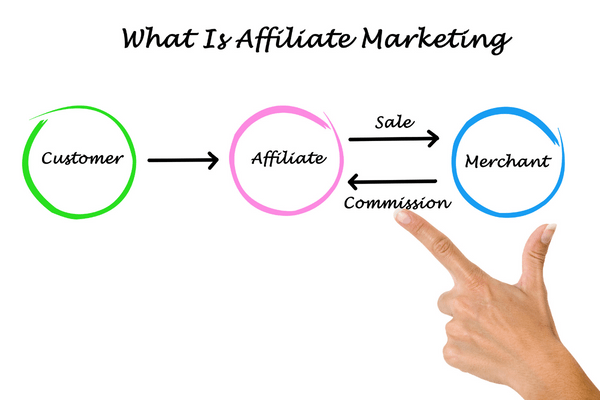
Defining Affiliate Marketing Without an Audience
Affiliate marketing without an audience refers to the practice of promoting products or services as an affiliate, even when you do not have a pre-existing online presence or a substantial following. In essence, it’s about embarking on your affiliate marketing journey from square one, without the benefit of a built-in audience or a well-established platform. This approach is often characterized by a focus on creating valuable content and utilizing various marketing strategies to attract, engage, and convert potential customers.
Highlighting Unique Challenges and Opportunities
While affiliate marketing without an audience comes with its set of challenges, it also presents distinct opportunities:
- Challenges:
- Lack of Trust and Authority: When you’re new to affiliate marketing and don’t have an established audience, it can be challenging to gain the trust of potential customers. People are more likely to buy products or services based on recommendations from trusted sources.
- Content Creation: Creating high-quality content that attracts and engages an audience is crucial in affiliate marketing. Without an existing audience, you might struggle to get your content noticed.
- SEO Challenges: Ranking in search engines can be challenging for new affiliate marketers without an established website or backlinks.
- Competition: The affiliate marketing space is often competitive, and established affiliates may dominate the niches you’re interested in.
- Patience and Persistence: Building an audience and generating significant affiliate income can take time, which can be discouraging at the beginning.
- Initial Investment: If you choose to use paid advertising to kickstart your affiliate marketing efforts, you may need to invest money before seeing a return.
- Compliance and Regulations: Affiliate marketing is subject to various regulations, including disclosure requirements. Ensure you understand the legal aspects of affiliate marketing to avoid potential issues.
- Networking: Building relationships with product vendors or affiliate networks can be challenging when you’re just starting.
- Opportunities:
- Niche Exploration: You have the freedom to explore various niches and industries without being tied to a specific audience. This allows you to discover potentially lucrative markets.
- Content Flexibility: You can experiment with different types of content, platforms, and promotional strategies to see what resonates with your target audience as you develop it.
- Fresh Perspective: A lack of preconceived notions or biases from an existing audience can lead to innovative and unique approaches to affiliate marketing.
- Early Learning: Starting from scratch allows you to learn the ropes of affiliate marketing from the ground up, which can lead to a deeper understanding of the industry.
- Adaptability: You can pivot and adapt your strategies quickly as you gather data and insights from your initial efforts, without the constraints of catering to an existing audience’s expectations.
- Building a Brand: You have the opportunity to shape your personal brand and online presence from the beginning, aligning it precisely with your affiliate marketing goals.
- Diverse Income Streams: Without an existing audience, you can diversify your affiliate partnerships across multiple products, services, or industries to create diverse income streams.
- Long-Term Growth: As you gradually build your audience, you can establish a loyal and engaged following, which can lead to sustainable long-term growth.
- Strategic Alliances: You can forge strategic partnerships with complementary businesses or influencers as you grow, expanding your reach and credibility.
- Data-Driven Decisions: You can start collecting and analyzing data from the outset to inform your decisions and optimize your affiliate marketing strategies.
- Fresh Content: You can create fresh, unbiased, and honest content that resonates with your audience as it develops, building trust from the ground up.
- Low Entry Barrier: Affiliate marketing generally requires minimal upfront investment, making it accessible for newcomers.
Starting affiliate marketing without an audience can be challenging, but it also provides opportunities for creativity, strategic growth, and the potential to build a successful affiliate marketing business over time.
In the next sections, we’ll delve deeper into strategies to overcome the challenges and leverage the opportunities presented by affiliate marketing without an audience. Whether you’re a newcomer or a seasoned marketer looking to explore this approach, you’ll gain insights into how to navigate this rewarding journey effectively.
Choosing Right Niche
Choosing the right niche is a critical decision when starting affiliate marketing without an audience in 2023.

Importance of Niche Selection
- Foundation of Your Strategy: Your chosen niche defines the direction of your affiliate marketing efforts. It determines the products or services you’ll promote and the audience you’ll target.
- Relevance: A well-chosen niche allows you to connect with an audience interested in your content and the products or services you promote. This relevance increases the likelihood of conversions.
- Competitive Landscape: Some niches are highly competitive, making it challenging for newcomers to gain a foothold. Others may have untapped opportunities with less competition.
- Audience Appeal: The niche you select should align with your interests and expertise, as this will make it easier to create engaging content and build trust with your audience over time.
Factors to Consider When Choosing a Niche
- Passion and Knowledge: Consider niches that genuinely interest you and where you have some level of expertise. Your enthusiasm and knowledge will shine through in your content.
- Keyword Research: Utilize keyword research tools to identify high-search-volume keywords in different niches. Look for keywords that align with your interests and expertise.
- Market Demand: Research to identify niches with sufficient demand. Use tools like keyword research and trend analysis to gauge interest.
- Competition: Assess the level of competition in your chosen niche. Low competition niches can be easier to break into but may offer lower commissions, while high competition niches can be more lucrative but require a more strategic approach.
- Profitability: Evaluate the potential for earning commissions in your chosen niche. Look for products or services with decent affiliate payouts and a track record of conversions.
- Evergreen vs. Trending Niches: Decide whether you want to focus on evergreen niches (those with long-term relevance) or trending niches (those currently in demand but subject to change).
- Audience Accessibility: Ensure that your target audience is accessible online. Are they active on social media, forums, or other online platforms where you can engage with them?
- Affiliate Programs: Research the availability and quality of affiliate programs within your chosen niche. Reliable affiliate programs with good reputations are essential.
- Alignment with Your Brand: Your chosen niche should align with your personal brand and values to maintain authenticity in your marketing efforts.
- Content Potential: Consider whether there is enough content you can create within the niche. Are there various angles, subtopics, or product categories to explore?
- Legal Considerations: Be aware of any legal or compliance issues specific to your chosen niche, such as regulations related to health, finance, or other sensitive topics.
Balancing Passion and Profitability
Striking a balance between your passion and the niche’s profitability is crucial. Ideally, you want to find a niche where your interests align with market demand. This balance will help you create content that resonates with your audience while also generating income.
Examples of Trending Niches
While niche popularity can vary, here are some examples of trending niches in 2023:
- Sustainable Living: With growing environmental awareness, niches related to sustainable living, eco-friendly products, and renewable energy solutions are gaining traction.
- Health and Wellness: The health and wellness niche, including topics like mental health, fitness, and holistic wellness, remains evergreen and is continuously evolving.
- Tech and Gadgets: Tech-related niches, especially those involving emerging technologies like AI, VR, and smart home devices, are in high demand.
- Remote Work and Freelancing: Given the shift towards remote work, niches offering advice on remote work productivity, freelancing opportunities, and digital nomadism are thriving.
- Home Improvement: With more people investing in their homes, niches related to home improvement, DIY projects, and interior design are seeing increased interest.
Remember that while these niches may be trending in 2023, your choice should align with your interests and expertise. Passion for your niche will make it easier to create compelling content and engage your audience effectively.
In summary, choosing the right niche for starting affiliate marketing without an audience in 2023 requires careful consideration of your interests, market demand, competition, and profit potential. A well-chosen niche provides a strong foundation for your affiliate marketing strategy and sets you on a path to success.
Market Research: Identify Your Target Audience
When starting affiliate marketing without an audience, conducting thorough market research is paramount. This research helps you pinpoint your target audience, understand their needs, and tailor your content and affiliate promotions accordingly.

Market Research Overview
- Definition: Market research is the process of gathering and analyzing information about potential customers, their preferences, behaviors, and needs in a specific niche or industry.
- Purpose: The goal of market research in affiliate marketing is to understand your potential audience on a deeper level, allowing you to tailor your content and promotions to their specific needs and preferences.
Identifying Your Target Audience
- Demographics: Start by defining the demographic characteristics of your ideal audience. This includes factors like age, gender, location, income level, and education.
- Psychographics: Dive into the psychographic aspects of your audience, such as their interests, hobbies, values, and lifestyle choices. This information helps you connect with them on a personal level.
- Behavioral Traits: Understand the behaviors of your target audience. What are their online habits, buying patterns, and decision-making processes?
- Problem-Solution Fit: Identify the problems or pain points your target audience faces. Your affiliate marketing efforts should focus on offering solutions to these issues.
Gathering Market Data
- Surveys and Questionnaires: If you have an existing audience or website visitors, consider conducting surveys or questionnaires to gather direct feedback. Ask about their interests, preferences, and challenges related to your niche. Create surveys to collect data directly from your potential audience. Tools like Google Forms and SurveyMonkey can be helpful.
- Competitor Analysis: Study your competitors in the same niche. Analyze their content, target audience, and strategies to gain insights. Identify gaps or opportunities they may have missed.
- Keyword Research: Use keyword research tools to identify the search terms and phrases your target audience is using. This not only helps you understand their interests but also guides your content creation and SEO efforts.
- Social Media Insights: Explore social media platforms to gain insights into discussions, trends, and conversations related to your niche.
- Forums and Communities: Explore online communities, forums, and social media groups related to your niche. Participate in discussions and observe the questions and problems raised by members. This can be a goldmine of information about your target audience’s pain points.
Analyzing the Data
- Audience Segmentation: Begin by segmenting your potential audience. Divide them into specific groups based on demographics, interests, behaviors, and pain points. For example, if you’re in the fitness niche, segments might include beginners, advanced athletes, or people with specific fitness goals.
- Prioritization: Determine which segments of your target audience are most valuable and align with your affiliate products or services.
- Customer Personas: Create detailed customer personas for each audience segment. These personas should include information such as age, gender, location, job, hobbies, goals, and challenges. This exercise helps you humanize your audience and better empathize with their needs.
- Analytics and User Behavior: Once you start creating content, use website analytics tools to track user behavior. Analyze which topics and types of content resonate the most with your audience.
Content Strategy and Affiliate Product Selection
- Content Alignment: Tailor your content strategy to address the specific needs, interests, and pain points of your target audience segments.
- Affiliate Product Selection: Choose affiliate products or services that align with the problems your audience faces and provide solutions they seek.
Engagement and Building Trust
- Engagement Strategies: Craft content that engages your target audience. This could include blog posts, videos, social media posts, or podcasts.
- Trust Building: Build trust by providing valuable, honest, and unbiased information. Transparency is essential in affiliate marketing.
In summary, conducting thorough market research is the foundation for a successful affiliate marketing campaign when you don’t have an existing audience. It helps you understand your potential customers, their needs, and their behaviors, enabling you to create content and select affiliate products that genuinely resonate with and provide value to them and build trust over time.
Building a Website or Blog
A website or blog is one of the best mediums to promote affiliate products by sharing content like articles, tutorials, tips, and tricks. You can start a blog today by following this exclusive guide step-by-step: How to Start a Blog from Scratch and Make It Successful to Make Money in 2023.

Purpose of a Website:
- Online Hub: Your website serves as your online hub and the central platform where you can create and share content related to your chosen affiliate niche.
- Credibility: A well-designed website adds credibility and professionalism to your affiliate marketing efforts. It’s a place where potential customers can learn more about you and your recommendations.
- Content Showcase: Your website is the primary space to showcase your content, such as blog posts, reviews, tutorials, videos, and other valuable resources.
Domain Name and Hosting
- Choose a Domain Name: Select a domain name that is relevant to your niche and easy to remember. Consider using a domain registrar to purchase your domain.
- Web Hosting: Find a reliable web hosting provider to host your website. Look for hosting plans that match your needs and budget.
Website Creation, Design and Customization
- Choose a Content Management System (CMS): Popular CMS platforms like WordPress, Joomla, or Drupal allow you to create and manage your website easily. You can choose WordPress, as it is one of the most popular CMS in the world.
- Select a Theme or Template: Choose a theme or template that aligns with your niche and provides a user-friendly experience. Customize it to reflect your brand.
- Responsive Design: Ensure that your website design is responsive, meaning it adapts to various screen sizes (e.g., desktop, tablet, mobile) for a better user experience.
You can use Astra Pro or Ocean WP Premium super-fast and super responsive WordPress themes with the drag-and-drop Elementor Pro theme builder to design your website or blog. You can buy the Astra Pro, Ocean WP Premium themes, and Elementor Pro theme builder from their official website. To know more about Astra Pro, OceanWP Premium themes, and the Elementor Pro theme builder, you can explore the ‘Our Recommendations‘ section of this guide.
Create Essential Pages
- About Page: Share your story, your expertise, and why readers should trust your recommendations.
- Contact Page: Provide a way for visitors to reach out to you.
- Privacy Policy: Ensure your website complies with data protection regulations.
- Disclaimer: Disclose your affiliate relationships and how you earn commissions.
Implement SEO Best Practices
- Install an SEO plugin (e.g., Yoast SEO) to help optimize your content.
- Focus on on-page SEO, including keyword optimization, meta tags, and header tags.
Content Strategy
- Develop a content plan that aligns with your niche and audience’s interests.
- Create high-quality, informative, and engaging content. Consider starting with cornerstone articles that provide comprehensive information on important topics.
Affiliate Disclosure
- Place clear and conspicuous affiliate disclosures on relevant pages and posts to maintain transparency with your audience.
User Experience and Navigation
- Ensure a user-friendly layout and easy navigation. Use menus and categories to organize your content.
- Make your website mobile-responsive to cater to visitors on all devices.
Opt-In Forms and Email Marketing
- Include opt-in forms to collect email addresses and build your email list.
- Set up an email marketing platform (e.g., Mailchimp, ConvertKit) to nurture your audience.
Analytics and Tracking
- Google Analytics: Install Google Analytics or similar tracking tools to monitor your website’s performance, traffic, and user behavior. This data will help you make informed decisions.
Monetization Integration
- Integrate affiliate links and banners strategically within your content.
- Use affiliate plugins to manage and track your affiliate partnerships.
Promote Your Website
- Share your content on social media platforms.
- Participate in relevant online communities and forums, providing value and linking back to your site.
Maintenance, Updates and Security
- Regular Updates: Keep your website content fresh and up to date to maintain audience engagement and SEO rankings.
- Security: Implement security measures to protect your website from potential threats, such as malware and hacking attempts. Moreover, consider implementing an SSL certificate for data encryption.
Building a website/blog for affiliate marketing is a significant step that enables you to create, share, and promote affiliate content to your target audience. It’s an essential tool for establishing your online presence, building credibility, and ultimately, generating affiliate commissions.
Affiliate Program Selection
Choosing the right affiliate programs is a crucial step in your journey to start affiliate marketing without an audience in 2023. The programs you partner with will directly impact your success and the trust of your audience.
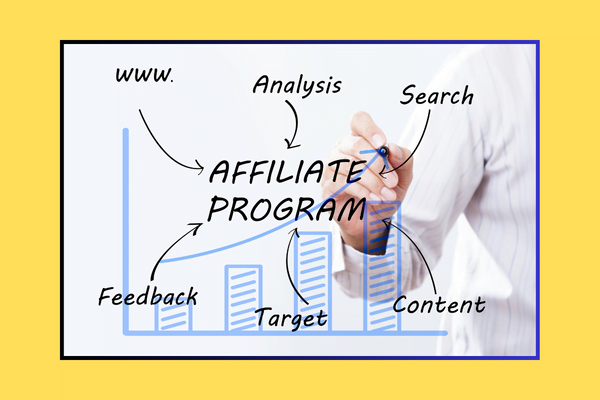
Here’s how to make informed decisions:
Criteria for Choosing Affiliate Programs
When evaluating affiliate programs, consider the following criteria:
- Reputation: Partner with reputable companies and brands with a history of fair and timely affiliate payments.
- Commission Rates: Look for competitive commission rates that align with your profit goals.
- Product Quality: Promote products or services that are high-quality and genuinely benefit your target audience.
- Cookie Duration: Check the duration of the affiliate cookie to ensure you receive commissions for a reasonable period after a referral.
- Payment Frequency: Determine how often you’ll receive payments (e.g., monthly, quarterly) and the minimum payout threshold.
- Marketing Resources: Assess the availability of marketing materials, such as banners, product images, and tracking tools.
- Affiliate Support: Consider the level of support and assistance provided by the affiliate program, especially if you’re new to affiliate marketing.
- Terms and Conditions: Read and understand the program’s terms and conditions, including any restrictions or exclusions.
Overview of Reputable Affiliate Networks
Reputable affiliate networks provide a platform where you can find a wide range of affiliate programs to join. Some popular affiliate networks in 2023 include:
- Amazon Associates: Known for its extensive product offerings and well-established affiliate program.
- Click Bank: Specializes in digital products across various niches.
- ShareASale: Offers a diverse selection of affiliate programs and a user-friendly interface.
- CJ Affiliate (formerly Commission Junction): Features partnerships with numerous recognizable brands.
- Rakuten Advertising: Known for its global reach and partnerships with major brands.
How to Identify Products That Resonate with Your Chosen Niche
To ensure the products you promote align with your niche and resonate with your audience:
- Research Your Niche: Understand the specific needs, problems, and preferences of your target audience within your chosen niche.
- Align with Your Content: Select products that seamlessly fit into the content you create. They should solve problems or fulfill desires related to your niche.
- Personal Experience: Whenever possible, try the products or services yourself. Personal experience can strengthen your recommendations.
- Read Reviews and Testimonials: Gather insights from user reviews and testimonials to gauge customer satisfaction and product quality.
- Look for Affiliate Programs: Search for affiliate programs associated with products or services you believe in and trust.
By carefully selecting affiliate programs that meet your criteria and align with your niche, you’ll be on the path to building a trustworthy affiliate marketing strategy, even without an existing audience. Over time, your audience will come to rely on your recommendations, enhancing your credibility and earning potential.
Content Creation Strategy

Building a Content Strategy Tailored to Your Niche
Creating a content strategy tailored to your niche is essential for success in affiliate marketing without an audience. Here’s how to build an effective strategy:
- Niche Relevance: Ensure that your content aligns closely with the interests and needs of your target audience within your chosen niche.
- Keyword Research: Conduct thorough keyword research to identify the topics and search terms your audience is actively searching for. This will help you optimize your content for search engines.
- Content Calendar: Develop a content calendar that outlines your content creation schedule. Plan content themes and publication dates in advance to maintain consistency.
- Content Formats: Consider various content formats, such as blog posts, videos, podcasts, infographics, or eBooks, depending on your niche and audience preferences.
- Evergreen Content: Incorporate evergreen content into your strategy. These are articles or resources that remain relevant over time and can drive consistent traffic.
Tips for Creating Valuable Content That Attracts an Audience
Creating valuable content is the cornerstone of attracting and retaining an audience in affiliate marketing:
- Address Pain Points: Identify and address the pain points and challenges your target audience faces within your niche. Offer solutions and practical advice.
- In-Depth Content: Produce in-depth, comprehensive content that thoroughly covers a topic. This demonstrates expertise and builds trust.
- Engaging Headlines: Craft attention-grabbing headlines that pique curiosity and encourage readers to click and explore further.
- Visual Appeal: Incorporate visuals, such as images, diagrams, and videos, to enhance the overall appeal and understanding of your content.
- Use Storytelling: Weave storytelling into your content when relevant. Stories connect with readers on a personal level.
- Research and Cite Sources: Back your content with research, data, and credible sources. This adds credibility to your recommendations.
- Regular Updates: Keep your content up-to-date. Update older posts with new information or developments to maintain relevance.
Balancing Educational and Promotional Content
Finding the right balance between educational and promotional content is crucial:
- Educational Content: The majority of your content should be educational and informative. Focus on providing value to your audience and helping them solve problems.
- Promotional Content: While promotional content is necessary for affiliate marketing, it should be a smaller portion of your overall content. Make sure promotions are relevant and genuinely beneficial to your audience.
- Transparency: Clearly disclose when you’re promoting affiliate products within your content. Maintain transparency and honesty with your audience.
- Soft Selling: Use soft selling techniques rather than aggressive sales tactics. Highlight the benefits of the products you’re promoting and explain how they can help your audience.
By implementing these content creation strategies, you’ll be well-equipped to create valuable, engaging, and informative content that attracts and retains an audience, even when you’re starting without an initial following. Over time, your content will become a trusted resource in your niche, driving affiliate marketing success.
Moreover, you know very well that content is king! If you want to create great content and grow your business you have to learn How to Use Content Marketing Packages to Grow Your Business in 2023 and implement step-by-step.
SEO and Organic Traffic Generation

Role of SEO in Affiliate Marketing Without an Audience
SEO (Search Engine Optimization) plays a pivotal role in affiliate marketing, especially when you’re starting without an audience. Here’s why it’s crucial:
- Visibility: SEO helps your content rank higher in search engine results pages (SERPs). When your content appears on the first page of search results, it gains visibility to potential visitors.
- Traffic: Higher rankings lead to organic traffic, which is an essential source of visitors for affiliates, particularly in the absence of an established audience.
- Credibility: High-ranking content is often perceived as more credible and trustworthy, which can positively influence user behavior and click-through rates.
Keyword Research Techniques for Content Optimization
Effective keyword research is fundamental to SEO success. Here are some techniques for optimizing your content:
- Long-Tail Keywords: Focus on long-tail keywords—phrases that are more specific and have lower competition. Long-tail keywords often bring in highly targeted traffic.
- Keyword Tools: Utilize keyword research tools like Google Keyword Planner, SEMrush, or Ahrefs to identify relevant keywords with search volume data. Moreover, you can conduct keyword research using PHP script to boost SEO.
- Competitor Analysis: Analyze competitor content to discover keywords they are targeting. Look for gaps or opportunities in their keyword strategy.
- User Intent: Understand the intent behind user searches. Are users looking for information, product reviews, comparisons, or purchase-related queries? Tailor your content accordingly.
- Content Optimization: Incorporate target keywords naturally within your content, including headings, subheadings, and the body of your articles.
On-Page and Off-Page SEO Best Practices
Implementing on-page and off-page SEO best practices can significantly improve your search rankings:
On-Page SEO:
- Optimize meta titles and descriptions with target keywords.
- Use header tags (H1, H2, H3) to structure your content.
- Include relevant images with descriptive alt text.
- Create internal links to other relevant pages on your website.
- Ensure mobile-friendliness and fast page loading times.
- Use schema markup to enhance search engine visibility.
Off-Page SEO:
- Build high-quality backlinks from reputable websites in your niche. Guest posting and outreach can help.
- Foster social media engagement and shares for your content.
- Monitor and manage your online reputation and brand mentions.
- Encourage user-generated content and reviews if applicable.
By implementing these SEO techniques, you can improve the discoverability of your affiliate marketing content and drive organic traffic to your website. Over time, your SEO efforts will contribute to the growth of your audience and affiliate commissions, even without an initial following.
Promote Affiliate Products
Promoting affiliate products is at the core of affiliate marketing. To successfully promote these products, especially when you’re starting without an audience, you need a strategic approach. Here’s how to do it:
- Create Value-Driven Content: Develop content that focuses on solving problems, providing solutions, or fulfilling the needs and desires of your target audience. Whether through blog posts, videos, or other formats, your content should offer genuine value.
- Product Reviews and Comparisons: Craft detailed product reviews and comparisons within your niche. Share your honest opinions, highlighting the pros and cons of each product. These reviews help potential buyers make informed decisions.
- Tutorials and How-To Guides: Create tutorials and how-to guides that demonstrate how the affiliate products can be used effectively. Show your audience practical ways to benefit from these products.
- Utilize Affiliate Links: Integrate affiliate links naturally within your content. Use anchor text, buttons, or call-to-action elements that encourage readers to click through and explore the products.
- Content Optimization for Conversions: Optimize your content for conversion. This includes strategically placing affiliate links, using compelling CTAs (Call to Actions), and employing persuasive writing techniques.
- Educational Email Marketing: If you’ve built an email list, use it to educate and inform your subscribers about relevant affiliate products. Craft informative and engaging email campaigns that highlight the value of these products.
- Leverage Social Media: Promote your affiliate content on social media platforms where your target audience is active. Share snippets, teaser content, and links to your in-depth reviews or guides.
- Engage in Communities: Participate in online communities, forums, and social media groups related to your niche. Provide helpful answers and insights, and when relevant, share your affiliate content as a resource.
- Paid Advertising: Consider using paid advertising platforms like Google Ads or Facebook Ads to target specific keywords or demographics related to your niche. Ensure that your ad campaigns are cost-effective and well-optimized.
- Discounts and Special Offers: If applicable, negotiate special discounts or offers for your audience. Exclusive deals can incentivize conversions.
- Track and Analyze Performance: Use affiliate tracking tools and analytics to monitor the performance of your affiliate promotions. Understand which products are converting well and which strategies are most effective.
- Disclosure and Transparency: Always maintain transparency with your audience. Clearly disclose your affiliate relationships and any compensation you receive for promoting products.
Remember that building trust with your audience is paramount. Promote products that genuinely align with your niche and audience needs. Over time, as you consistently provide value and build credibility, your affiliate marketing efforts will yield results, even without an initial audience. Affiliate marketing is not just about selling; it’s about helping your audience make informed choices.
Email Marketing for Audience Growth
Email marketing is a powerful tool for building and nurturing an audience, especially when you’re starting affiliate marketing without one. Here’s how to leverage email marketing effectively:

Importance of Building an Email List
Building an email list is crucial for several reasons:
- Direct Connection: Email allows you to communicate directly with your audience, free from the constraints of algorithms or platform policies.
- Audience Ownership: You own your email list, unlike social media platforms where you’re subject to their rules. This provides more control over your audience.
- Targeted Communication: You can segment your email list based on user interests and behaviors, allowing you to send targeted and personalized content.
- Audience Retention: Email is an effective way to retain your audience’s interest and keep them engaged with your affiliate promotions.
Crafting Lead Magnets to Entice Sign-Ups
To entice visitors to subscribe to your email list, offer valuable lead magnets:
- Ebooks and Guides: Create downloadable ebooks or comprehensive guides related to your niche. These should address common pain points or provide in-depth information.
- Checklists and Templates: Offer practical checklists, templates, or worksheets that help your audience achieve specific goals.
- Exclusive Content: Provide access to exclusive content, such as webinars, video tutorials, or interviews with industry experts.
- Discounts and Offers: Offer exclusive discounts or special deals on affiliate products to subscribers.
- Email Courses: Create email courses that deliver valuable information over a series of emails.
- Quizzes and Assessments: Develop quizzes or assessments that provide personalized recommendations or insights.
Email Marketing Tips and Campaign Ideas
To effectively use email marketing for audience growth, consider the following tips and campaign ideas:
- Segmentation: Segment your email list based on user preferences, behaviors, or demographics. Send tailored content and promotions to each segment.
- Automation: Implement email automation sequences, such as welcome emails, nurture sequences, and abandoned cart reminders, to engage subscribers at the right time.
- Personalization: Use the recipient’s name and personalize email content based on their interests and previous interactions.
- Consistency: Maintain a consistent email schedule to keep your audience engaged. This could be weekly newsletters or regular updates.
- A/B Testing: Experiment with A/B testing to optimize subject lines, email content, and CTAs for higher open and click-through rates.
- Storytelling: Incorporate storytelling into your emails to connect with subscribers on a personal level.
- Promotional Campaigns: Run promotional email campaigns to highlight affiliate products. Include compelling product descriptions and call-to-action buttons.
- Educational Content: Share educational content, tips, and advice related to your niche. Position yourself as an expert in your field.
- Feedback and Surveys: Collect feedback from subscribers through surveys to understand their needs and preferences better.
By implementing effective email marketing strategies, you can not only build an audience but also nurture and engage them over time. Building a loyal email subscriber base can significantly enhance the success of your affiliate marketing efforts, even when you’re starting without an existing audience.
Social Media Utilization
Social media is a dynamic tool for affiliate marketers, offering the potential to reach a broader audience and engage with potential readers. Here’s how to effectively leverage social media:

Utilizing Social Platforms to Reach Potential Readers
Social media platforms are excellent for expanding your affiliate marketing reach:
- Platform Selection: Choose social platforms that align with your niche and where your target audience is active. Popular options include Facebook, Twitter, Instagram, LinkedIn, Pinterest, and TikTok.
- Profile Optimization: Optimize your social media profiles with relevant keywords, a compelling bio, and a professional profile picture or logo.
- Consistent Branding: Maintain consistent branding across all your social media profiles to establish a cohesive online presence.
Strategies for Promoting Content and Building a Social Media Following
Building a social media following and promoting your affiliate content require strategic efforts:
- Content Sharing: Share your affiliate content on your social media profiles. Create attention-grabbing headlines and captions to pique interest.
- Visual Content: Utilize visual content, such as images, infographics, and videos, to make your posts more engaging.
- Content Calendar: Develop a content calendar to plan and schedule posts in advance, ensuring consistent activity.
- Engagement: Actively engage with your audience by responding to comments, questions, and messages promptly.
- Hashtags: Use relevant hashtags to increase the discoverability of your content. Research popular hashtags within your niche.
- Collaborations: Partner with influencers or complementary brands within your niche for collaborations or shout-outs.
- Contests and Giveaways: Run contests or giveaways to encourage audience participation and attract new followers.
- Paid Promotion: Consider investing in paid social media advertising to target specific demographics and reach a wider audience.
Art of Engaging with Your Social Media Audience
Engaging with your social media audience is key to building a loyal following:
- Two-Way Communication: Foster two-way communication by responding to comments, asking questions, and soliciting opinions.
- Listen and Learn: Pay attention to your audience’s preferences, interests, and feedback. Use this information to tailor your content.
- Live Sessions and Q&A: Host live sessions or Q&A sessions to interact with your audience in real-time.
- Educate and Entertain: Balance educational content with entertaining or relatable posts. Share personal insights and stories.
- Consistency: Maintain a consistent posting schedule to keep your audience engaged and informed.
- Value Delivery: Focus on providing value through your social media posts, whether it’s educational tips, product recommendations, or industry insights.
By effectively leveraging social media platforms, you can expand your affiliate marketing reach, connect with potential readers, and gradually build a loyal following. Building and nurturing a social media community takes time and effort, but it can significantly enhance your affiliate marketing efforts, even when starting without an initial audience.
Guest Posting and Outreach
Guest posting and outreach are effective strategies for gaining visibility, building credibility, and reaching a broader audience in affiliate marketing, especially when you are starting without an audience of your own. Here’s how to make the most of these strategies:
Guest Posting
Guest posting involves writing and publishing content on other websites or blogs within your niche. It’s a valuable way to showcase your expertise and gain exposure. Here’s how to approach it:
- Identify Target Websites: Research websites and blogs in your niche that accept guest posts. Look for platforms with engaged audiences.
- Quality Content: Create high-quality, informative, and well-researched content that provides value to the host site’s audience.
- Pitch Effectively: Craft personalized and compelling pitch emails to the site owners or editors. Highlight your expertise and the value your content offers.
- Include Your Affiliate Links: When appropriate, incorporate your affiliate links naturally within the guest posts. Ensure that the links add value to the content.
- Author Bio: Create a concise and informative author bio that includes a link back to your own website or landing page. This bio helps direct interested readers to your platform.
- Engage With the Audience: After your guest post is published, actively engage with the audience through comments and social media shares. Respond to questions and feedback.
- Build Relationships: Guest posting is also an opportunity to build relationships within your niche. Network with site owners, editors, and fellow guest authors.
Outreach
Outreach involves reaching out to individuals, websites, or influencers in your niche to establish connections, collaborations, or promotions. Here’s how to effectively conduct outreach:
- Identify Target Contacts: Create a list of potential contacts within your niche, including bloggers, influencers, industry experts, and website owners.
- Personalized Outreach: Craft personalized and genuine outreach emails or messages. Explain why you’re reaching out and how collaboration could be mutually beneficial.
- Collaboration Proposals: Offer collaboration proposals that align with your affiliate marketing goals. This could include joint webinars, product reviews, or content co-creation.
- Leverage Social Media: Connect with potential collaborators on social media platforms. Engage with their content and establish rapport before reaching out.
- Follow Up: If you don’t receive a response initially, follow up politely to express your continued interest in collaborating.
- Provide Value: Emphasize how your collaboration or partnership can provide value to their audience. Highlight the benefits for both parties.
- Track and Measure: Monitor the effectiveness of your outreach efforts. Track responses, collaborations, and any resulting traffic or conversions.
By incorporating guest posting and outreach into your affiliate marketing strategy, you can tap into established audiences, gain credibility, and expand your reach, even if you’re starting without your own audience. Building relationships within your niche is key to the success of these strategies.
Paid Advertising Strategies
Paid advertising is a powerful method for driving targeted traffic to your affiliate marketing offers, especially when you’re in the early stages without an established audience. Here’s how to effectively leverage paid advertising:

Introduction to Paid Advertising as a Traffic Source
Paid advertising involves paying for ad placements on various platforms to reach a specific audience. It offers several advantages:
- Immediate Visibility: Paid ads provide almost instant visibility to potential customers, bypassing the time required for organic growth.
- Targeting Options: Most advertising platforms allow precise audience targeting based on demographics, interests, behaviors, and more.
- Scalability: You can adjust your ad budget and campaigns as needed, making it suitable for both beginners and experienced marketers.
Platforms and Ad Types Suitable for Affiliate Marketers
Affiliate marketers can benefit from several advertising platforms and ad types:
- Google Ads: Ideal for search engine marketing (SEM) and display ads. You can target specific keywords and demographics.
- Facebook Ads: Offers detailed targeting options based on user interests, demographics, and behaviors. Suitable for both B2B and B2C niches.
- Instagram Ads: Great for visual content and reaching a younger demographic. Instagram is particularly effective for promoting physical products.
- YouTube Ads: Video ads on YouTube can be highly engaging. They are effective for product reviews and demonstrations.
- Native Advertising: Use native ads on platforms like Taboola or Outbrain to promote affiliate content in a non-disruptive way.
- Paid Social Promotions: Boost your social media posts on platforms like Twitter, LinkedIn, or Pinterest to increase visibility.
- Content Discovery Platforms: Platforms like Rev content and Content.ad can help promote affiliate content as recommendations on other websites.
Budgeting and Optimizing Ad Campaigns Effectively
To make the most of your paid advertising budget and campaigns:
- Set Clear Goals: Define your campaign objectives, whether it’s driving website traffic, generating leads, or making direct sales.
- Keyword Research: If using pay-per-click (PPC) advertising, conduct thorough keyword research to target the right keywords.
- Ad Creatives: Create compelling ad copy and visuals that resonate with your target audience. A/B test different ad variations to optimize performance.
- Landing Pages: Ensure that your landing pages are highly relevant to the ad content. Optimize them for conversions.
- Budget Allocation: Allocate your budget strategically, focusing on the best-performing ads and channels. Monitor and adjust as needed.
- Conversion Tracking: Implement conversion tracking to measure the success of your campaigns and identify areas for improvement.
- Ad Schedule: Consider the timing of your ads. Run ads during periods when your target audience is most active.
- Ad Quality Score: On platforms like Google Ads, aim to improve your Quality Score by creating relevant ad campaigns and landing pages.
- Retargeting: Implement retargeting campaigns to re-engage users who have visited your website but didn’t convert.
- Ad Compliance: Ensure that your ad campaigns comply with the policies of the advertising platforms and adhere to ethical standards.
By mastering paid advertising strategies, affiliate marketers can drive immediate traffic and conversions, making it a valuable tool for those starting without an existing audience. Effective budgeting and optimization are key to achieving a positive return on investment (ROI) with paid advertising.
Networking and Collaboration
Networking and collaboration are essential strategies for affiliate marketers, especially those starting without an audience. Building relationships within the industry can open up numerous opportunities for growth and success. Here’s how to effectively network and collaborate:

Join Affiliate Marketing Communities
- Online Forums: Participate in affiliate marketing forums and communities where professionals share insights, tips, and opportunities. Platforms like Warrior Forum, Affiliate Fix, or niche-specific forums can be invaluable.
- Social Media Groups: Join social media groups on platforms like Facebook, LinkedIn, or Reddit that cater to affiliate marketers. Engage in discussions and connect with like-minded individuals.
- Conferences and Events: Attend affiliate marketing conferences, webinars, and networking events both in person and online. These events provide opportunities to meet industry experts and potential collaborators.
Build Genuine Relationships
- Engage Actively: When you join communities or attend events, actively participate in discussions. Offer help, share your knowledge, and ask questions. Networking is a two-way street.
- Connect on Social Media: Connect with fellow affiliate marketers, influencers, and industry leaders on platforms like LinkedIn and Twitter. Follow their content and engage with their posts.
- Personalized Outreach: Reach out to individuals you admire or wish to collaborate with through personalized messages or emails. Express your interest in connecting and potentially working together.
Collaborate for Mutual Benefit
- Cross-Promotions: Collaborate with other affiliates or complementary brands for cross-promotional opportunities. You can share each other’s content, products, or services to reach new audiences.
- Content Co-Creation: Partner with other affiliates to create co-branded content, such as webinars, eBooks, or podcasts. This expands your reach and credibility.
- Affiliate Programs: Explore affiliate programs that offer tiered or multi-level commissions. Encourage others to promote affiliate products under your referral, earning a percentage of their sales.
- Guest Appearances: Offer to be a guest on podcasts, webinars, or YouTube channels within your niche. This exposes you to a broader audience.
Provide Value in Collaborations
- Focus on Audience Value: Ensure that any collaboration you enter into provides genuine value to your audience. Collaborations should align with your niche and audience’s interests.
- Transparency: Maintain transparency with your audience when engaging in collaborations. Disclose any partnerships or affiliations to build trust.
Track and Measure Results
- Performance Metrics: Monitor the performance of your collaborations. Track metrics such as website traffic, conversions, and engagement to assess the impact.
- Feedback and Adjustments: Collect feedback from collaborators and your audience to make improvements for future partnerships.
Networking and collaboration not only expand your reach but also introduces fresh perspectives and opportunities to your affiliate marketing journey. Building strong relationships within the industry can lead to long-term success, even if you’re starting without an initial audience.
Measuring Success and Adjusting Strategies
Tracking and analyzing the performance of your affiliate marketing efforts are essential for continuous improvement, especially when starting without an audience.

Here’s how to effectively measure success and adjust your strategies:
Key Performance Indicators (KPIs) to Track
Affiliate marketers should monitor various KPIs to gauge the effectiveness of their campaigns:
- Click-Through Rate (CTR): Measure how many users click on your affiliate links or ads compared to the total number of impressions.
- Conversion Rate: Track the percentage of visitors who complete the desired action, such as making a purchase or signing up for an email list.
- Earnings Per Click (EPC): Calculate the average earnings generated from each click on your affiliate links. It helps assess the profitability of your promotions.
- Traffic Sources: Identify which sources drive the most traffic to your affiliate content, such as organic search, social media, or paid advertising.
- Revenue and Commissions: Monitor your affiliate revenue and commissions earned from different programs or products.
- Bounce Rate: Keep an eye on the bounce rate of your landing pages to assess user engagement and content quality.
- Average Order Value (AOV): For e-commerce affiliates, track the average order value to understand the purchasing behavior of your audience.
- Customer Lifetime Value (CLV): If applicable, measure the long-term value of customers you acquire through affiliate marketing.
How to Use Analytics Tools for Data-Driven Decision-Making
Analytics tools provide valuable insights into your affiliate marketing performance. Here’s how to make data-driven decisions:
- Google Analytics: Set up Google Analytics to track website traffic, user behavior, and conversions. Analyze which pages and content are performing well.
- Affiliate Network Analytics: Utilize analytics provided by your affiliate networks to monitor clicks, conversions, and earnings from specific programs.
- Email Marketing Analytics: If you use email marketing, analyze email campaign metrics such as open rates, click-through rates, and conversion rates.
- Heatmaps and User Tracking: Consider using heatmapping tools like Hotjar to understand how users interact with your website and where they drop off.
- A/B Testing: Conduct A/B tests to compare different variations of your content or campaigns to identify what resonates best with your audience.
Making Adjustments Based on Performance Data
Data-driven decision-making is the foundation of refining your affiliate marketing strategies:
- Identify Underperforming Campaigns: Regularly review your KPIs to identify underperforming campaigns or content. Focus on areas that need improvement.
- Optimize Content: Based on analytics data, update or optimize underperforming content. This could include revising titles, improving CTAs, or enhancing product recommendations.
- Scale Successful Campaigns: Identify high-performing campaigns and strategies and consider scaling them. Allocate more resources to what’s working.
- Experiment and Innovate: Don’t be afraid to try new strategies or experiment with different affiliate programs. Use data to assess the outcomes of these experiments.
- Budget Allocation: Adjust your budget allocation based on the ROI of different marketing channels and campaigns. Allocate resources where they yield the best results.
- Continuous Learning: Stay informed about industry trends and updates. Adapt your strategies as the affiliate marketing landscape evolves.
By measuring your affiliate marketing success, utilizing analytics tools, and making informed adjustments, you can continuously enhance your strategies and increase your chances of success, even without an existing audience. Data-driven decision-making allows you to allocate resources effectively and optimize your efforts for better results.
Diversify Income Sources
Diversifying your income sources in affiliate marketing is a smart strategy that can provide stability, reduce risk, and maximize your earnings potential, especially when you’re starting without an audience.

Here’s why and how to diversify:
Reduced Dependence
- Single Program Risk: Relying on a single affiliate program or product can be risky. If that program experiences issues, changes policies, or loses popularity, your income may suffer.
- Market Fluctuations: Niche markets and consumer preferences can change over time. Diversification helps mitigate the impact of market fluctuations.
Maximize Earnings
- Multiple Income Streams: Diversification allows you to tap into multiple income streams. This includes promoting a variety of products, services, or affiliate programs within your niche.
- Optimize Opportunities: Different programs offer varying commission rates, promotional materials, and conversion rates. By diversifying, you can identify the most lucrative opportunities.
Audience Preferences
- Cater to Audience Preferences: Your audience may have diverse preferences and needs. By offering a range of products or services, you can cater to a broader spectrum of your audience.
How to Diversify Income Sources
- Explore Multiple Programs: Join and promote products from several affiliate programs within your niche. Choose programs with varying commission structures and payment models.
- Promote Different Product Types: Diversify by promoting a mix of physical products, digital products, subscription services, and informational products.
- Balance High and Low-Ticket Items: Include both high-ticket items with substantial commissions and lower-priced items with higher conversion rates.
- Consider Recurring Commissions: Look for affiliate programs that offer recurring commissions, such as subscription-based services. These can provide consistent income over time.
- Affiliate Networks: Join affiliate networks that offer a wide range of programs in your niche. Networks like Click Bank, ShareASale, or CJ Affiliate provide access to diverse opportunities.
- Monitor Performance: Regularly assess the performance of different income sources. Identify which products or programs are driving the most revenue and adjust your strategies accordingly.
- Adapt to Audience Feedback: Pay attention to your audience’s feedback and preferences. If certain products or services resonate more with them, focus on those.
- Test and Experiment: Don’t be afraid to experiment with new products or affiliate programs. Test their performance and adapt your portfolio accordingly.
- Risk Management: While diversification is essential, avoid spreading yourself too thin. Focus on a manageable number of income sources to ensure effective management.
Diversifying your income sources in affiliate marketing not only safeguards your earnings but also opens up opportunities for growth and optimization. By offering a variety of products and promoting multiple affiliate programs, you can cater to a broader audience, adapt to changing market dynamics, and maximize your income potential.
Scaling Your Efforts
Scaling your affiliate marketing efforts involves increasing the scope and impact of your strategies to reach a wider audience and generate higher earnings. Here’s how to effectively scale your efforts:
Content Creation and Optimization
- Consistent Content: Continue to create high-quality content on a regular basis. Consistency is key to building trust and retaining your audience.
- Evergreen Content: Invest in evergreen content that remains relevant over time. These articles or videos can continue to attract new visitors and generate affiliate income.
- Keyword Expansion: Expand your keyword research and target a broader range of relevant keywords to capture more search traffic.
- Optimize Existing Content: Review and update older content to ensure it remains accurate and valuable. Optimize for SEO to improve rankings.
Traffic Generation Strategies
- Explore New Traffic Sources: Consider exploring additional traffic sources, such as emerging social media platforms, video marketing, or podcasting.
- Paid Advertising: If your budget allows, increase your investment in paid advertising to reach a larger audience quickly.
- Email Marketing: Expand your email marketing efforts by segmenting your list and sending targeted campaigns to different audience segments.
Affiliate Program Diversification
- Join More Programs: Consider joining additional affiliate programs or networks to expand the range of products or services you can promote.
- Negotiate Higher Commissions: If you’ve established a track record of success, don’t hesitate to negotiate higher commission rates with affiliate program managers.
Automation and Systems
- Automate Repetitive Tasks: Identify tasks that can be automated, such as email marketing sequences, social media scheduling, or data tracking.
- Use Affiliate Tools: Utilize affiliate marketing tools and plugins to streamline your processes and optimize your campaigns.
Team Building and Outsourcing
- Hire Freelancers: Consider hiring freelancers or virtual assistants to handle tasks like content writing, SEO optimization, or social media management.
- Build a Team: As your income grows, you may eventually build a team of content creators, designers, and marketers to scale your operations further.
Performance Analytics and Optimization
- Analyze Performance: Continuously analyze the performance of your affiliate marketing efforts. Identify which strategies, channels, or products are most profitable.
- Optimize for Conversions: Focus on improving conversion rates by refining your content, design, and calls to action.
- Budget Allocation: Allocate your budget strategically, directing more resources toward high-performing strategies and scaling back on underperforming ones.
Networking and Partnerships
- Forge New Relationships: Continue networking within your niche to explore collaboration opportunities, joint ventures, or co-promotions.
- Partnerships: Seek partnerships with established brands or influencers to expand your reach and credibility.
Scaling your affiliate marketing efforts requires a combination of strategy, consistency, automation, and adaptation. By continually optimizing your strategies and expanding your reach, you can progressively grow your affiliate income and achieve long-term success, even when starting without an audience.
Ethical Considerations, Compliance and Disclosure
Ethical conduct is fundamental in affiliate marketing. Maintaining transparency and complying with ethical standards not only builds trust with your audience but also ensures the long-term sustainability of your affiliate marketing efforts. Here’s what you need to know:
Importance of Transparency in Affiliate Marketing
- Building Trust: Transparency is the cornerstone of trust in affiliate marketing. It’s essential to be open and honest with your audience about your affiliate relationships and motivations.
- Compliance with Regulations: Many regions have regulations in place that require affiliate marketers to disclose their affiliate relationships clearly. Non-compliance can lead to legal consequences.
- Audience Expectations: Modern consumers are savvy and expect transparency. Failing to disclose affiliate relationships can damage your reputation and erode trust.
Guidelines for Disclosing Affiliate Relationships to Your Audience
- Clear and Conspicuous: Disclosures should be clear, prominent, and easy to understand. Use language that your audience can readily comprehend.
- Location: Place disclosures where they are highly visible, such as near affiliate links, at the beginning of content, or in a dedicated disclosure section on your website.
- Affiliate Disclaimers: Use explicit language like “This post contains affiliate links” or “I may earn a commission if you purchase through my links.”
- Affiliate Link Labels: Label affiliate links with identifiers like “affiliate” or “ad” to distinguish them from regular links.
- Consistency: Ensure consistent disclosure practices across all platforms, including websites, social media, and email marketing.
- Educate Your Audience: Take the time to explain what affiliate marketing is and how it works. Address any questions or concerns your audience may have.
Avoiding Unethical Practices
- Honest Recommendations: Only promote products or services you genuinely believe in and have personal experience with. Avoid promoting products solely for the sake of earning commissions.
- Avoid Deceptive Tactics: Do not engage in deceptive tactics, such as false claims, fake reviews, or misleading information, to boost sales.
- Avoid Cookie Stuffing: Cookie stuffing involves setting affiliate cookies without the user’s knowledge or consent. It’s unethical and can result in affiliate program termination.
- Disclosure of Material Connections: Disclose any material connections, such as partnerships or sponsorships, that may influence your recommendations.
- Avoid Black Hat SEO: Do not engage in black hat SEO techniques to manipulate search engine rankings, as it can lead to penalties and damage your reputation.
- Respect Privacy: Comply with privacy regulations, such as GDPR or CCPA, when collecting and handling user data.
- Monitor Affiliate Programs: Regularly review the terms and conditions of affiliate programs you join. Ensure compliance with their policies.
Affiliate marketing can be highly profitable when conducted ethically and transparently. Building trust with your audience is a valuable asset that can lead to long-term success. By following ethical guidelines, being transparent about your affiliations, and avoiding unethical practices, you can maintain your credibility and reputation in the affiliate marketing industry.
Staying Updated and continuously Learning
Affiliate marketing is a dynamic field that evolves continuously. Staying updated with industry trends, algorithm changes, and emerging technologies is essential for success, especially when starting without an audience. Here’s how to stay informed and continuously improve your affiliate marketing strategies:
Follow Industry News and Blogs
- Regularly read reputable affiliate marketing blogs, industry news websites, and forums. This helps you stay informed about the latest trends, program updates, and best practices.
Participate in Affiliate Marketing Communities
- Join online communities, forums, and social media groups dedicated to affiliate marketing. Engage in discussions, ask questions, and share your experiences.
Attend Webinars and Conferences
- Attend webinars, virtual conferences, and live events related to affiliate marketing. These events often feature industry experts sharing valuable insights and strategies.
Subscribe to Newsletters
- Subscribe to newsletters from affiliate marketing influencers and organizations. They often provide curated content and updates delivered to your inbox.
Learn from Case Studies
- Study successful affiliate marketing case studies and real-world examples. Analyze what worked for others and adapt those strategies to your own efforts.
Experiment and Test
- Don’t be afraid to experiment with new strategies, tools, or platforms. A/B testing can help you identify what resonates best with your audience.
Master SEO and Algorithm Updates
- Keep up with search engine algorithm updates (e.g., Google’s algorithm changes) and adapt your SEO strategies accordingly. Search engines can significantly impact your organic traffic.
Explore New Technologies
- Stay open to adopting new technologies, such as AI-driven analytics, chatbots, or social commerce, to enhance your affiliate marketing strategies.
Continuous Learning Platforms
- Invest in courses, certifications, or online learning platforms to deepen your knowledge of affiliate marketing and related disciplines like SEO, email marketing, and social media marketing.
Networking with Peers
- Regularly network with fellow affiliate marketers to exchange ideas, share insights, and learn from each other’s experiences.
Analyze Your Own Data
- Review your own performance data and analytics regularly. Identify trends, patterns, and areas for improvement in your affiliate marketing campaigns.
Adapt to Legal and Regulatory Changes
- Stay informed about legal and regulatory changes that may affect affiliate marketing, such as data protection laws (e.g., GDPR) or advertising regulations.
Staying updated and continuously learning is not only a strategy for affiliate marketing success but a necessity. In this ever-evolving field, those who adapt and embrace new strategies and technologies are better positioned to thrive, even when starting without an audience.
Patience and Persistence
Patience and persistence are virtues that every affiliate marketer should embrace on their journey to success, especially when starting without an existing audience. Here’s why these qualities are crucial and how to apply them effectively:
Understanding the Affiliate Marketing Timeline
- Affiliate marketing success rarely happens overnight. It’s essential to set realistic expectations regarding the time it takes to build an audience and see significant earnings.
- Recognize that it may take several months or even years to establish a substantial online presence and generate substantial income.
Consistent Effort Over Time
- Consistency in your efforts is key. Continuously produce valuable content, engage with your audience, and optimize your strategies.
- Understand that each piece of content you create contributes to your long-term success. Over time, this consistent effort builds a strong foundation.
Learning from Setbacks
- Expect setbacks and challenges along the way. Not every campaign will be a success, and not every strategy will yield immediate results.
- Treat setbacks as learning experiences. Analyze what went wrong, adjust your approach, and use each setback as an opportunity for growth.
Building Trust Takes Time
- Trust is the foundation of successful affiliate marketing. It takes time to build trust with your audience, as they become familiar with your content and recommendations.
- Be patient as you nurture this trust, and avoid shortcuts that may compromise your credibility.
Measuring Progress, Not Perfection
- Measure your progress over time rather than expecting perfection from the start. Analyze your metrics, track improvements, and celebrate small victories.
- Understand that incremental growth and improvement are the hallmarks of a successful affiliate marketing journey.
Adapting to Changing Circumstances
- The affiliate marketing landscape is dynamic. Be prepared to adapt to changes in algorithms, audience behavior, and industry trends.
- Persistence means not giving up when faced with challenges but rather finding new solutions and strategies.
Maintaining a Long-Term Perspective
- Approach affiliate marketing with a long-term perspective. Consider it as a sustainable business rather than a quick scheme.
- Understand that the efforts you put in today can yield dividends in the future, even if you don’t see immediate results.
Resilience in the Face of Competition
- Affiliate marketing can be competitive. Stay resilient and focused on your goals, even when you encounter competition.
- Emulate successful affiliates by learning from their strategies and adapting them to your niche.
In affiliate marketing, success often comes to those who patiently and persistently work toward their goals. Building an audience and earning a substantial income takes time, dedication, and the willingness to learn from both successes and setbacks. Embracing these virtues can lead to a rewarding and sustainable affiliate marketing career.
Our Recommendation
As you embark on your affiliate marketing journey without an existing audience in 2023, having the right tools and resources can make all the difference. We’ve handpicked a few essential solutions that can empower your affiliate marketing efforts. By clicking on the links below, you’ll not only gain access to powerful tools but also support our blog:
Astra Pro Theme
Why Astra Pro: Astra Pro is a versatile and lightning-fast WordPress theme that provides a solid foundation for your affiliate marketing website. Its seamless integration with page builders and customizable features will help you create a visually stunning and high-performing website.
OceanWP Premium Theme
Why OceanWP Premium: OceanWP Premium offers a range of premium features and extensions to elevate your website’s design and functionality. With its WooCommerce compatibility and SEO-friendly nature, it’s an excellent choice for affiliate marketers.
Elementor Pro Theme Builder
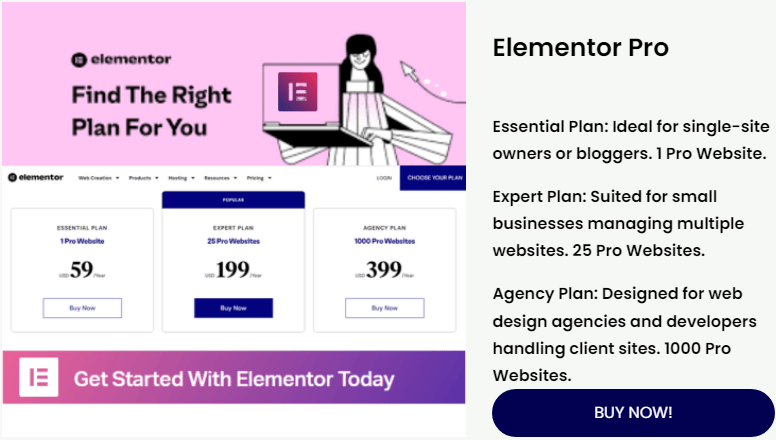
Why Elementor Pro: Elementor Pro is a game-changer for creating captivating and conversion-focused content. Its intuitive drag-and-drop interface empowers you to design stunning landing pages, blog posts, and product reviews that resonate with your audience.
These recommendations are based on our experience and have proven to be valuable assets for affiliate marketers. By using these tools, you’ll have the means to craft an attractive website, optimize your content, and engage your audience effectively. Moreover, you can explore my exclusive guides regarding installation and activation of Astra Pro & Elementor Pro as follows:
How to Install and Activate Astra Theme in 2023 on WordPress
How to Install and Set Up Elementor Pro Plugin in 2023 on Your WordPress Site
Conclusion
In wrapping up this comprehensive guide on “How to Start Affiliate Marketing Without an Audience in 2023,” let’s recap the vital insights and encourage you to embark on this exciting journey:
Key Takeaways:
- Understanding Affiliate Marketing Without an Audience
Affiliate marketing without an audience refers to the practice of promoting products or services as an affiliate, even when you do not have a pre-existing online presence or a substantial following.
- Step 1: Choose the Right Niche
Begin by selecting a niche that genuinely interests you and shows promise in attracting an audience. Dive into niche research to identify popular products and trends.
- Step 2: Conduct Market Research
Delve deep into your chosen niche to understand the needs, pain points, and preferences of your potential audience. Study your competitors to glean insights into effective strategies.
- Step 3: Establish Your Online Presence with a Website
Even without an existing audience, a professional website or blog is vital. It serves as your platform for sharing valuable content related to your niche.
- Step 4: Join Reputable Affiliate Programs
Identify and join reputable affiliate programs or networks aligned with your niche. Evaluate factors such as commission rates, product quality, and affiliate support.
- Step 5: Craft a Content Creation Strategy
Create high-quality, valuable content that resonates with your target audience. Focus on problem-solving and addressing their interests.
- Step 6: Embrace SEO and Organic Traffic Strategies
Learn the basics of SEO to improve your content’s visibility on search engines. Implement keyword research and optimization techniques.
- Step 7: Seamlessly Integrate Affiliate Products
Integrate affiliate links organically within your content. Write product reviews, tutorials, or comparison articles, always transparently disclosing your affiliate relationships.
- Step 8: Harness Email Marketing for Audience Growth
Start building your email list from day one. Offer incentives like ebooks or guides to encourage visitors to subscribe. Leverage email marketing campaigns to nurture leads and promote affiliate products.
- Step 9: Leverage Social Media
Share your content across social platforms to extend your reach. Engage with your followers and cultivate a community around your niche.
- Step 10: Explore Guest Posting and Outreach
Contribute guest posts to blogs or websites within your niche to expand your reach and authority.
- Step 11: Consider Paid Advertising
Explore paid advertising channels like Facebook Ads or Google Ads to drive targeted traffic to your content.
- Step 12: Foster Networking and Collaboration
Collaborate with fellow affiliate marketers, bloggers, or influencers within your niche. Joint ventures and partnerships can help you tap into existing audiences and broaden your reach.
- Step 13: Monitor and Optimize
Utilize tracking tools and analytics to monitor the performance of your affiliate campaigns. Analyze the data to refine your strategies for optimal results.
- Step 14: Diversify Your Income Streams
As your audience grows, explore additional monetization avenues such as sponsored content, selling your products or services, offering consulting or coaching, or hosting webinars.
- Step 15: Scale Your Efforts
With momentum on your side, expand your affiliate marketing activities. Continue to produce valuable content, broaden your reach, and seek out new affiliate opportunities.
- Step 16: Uphold Ethical Standards
Maintain transparency and adhere to guidelines for disclosing your affiliate relationships to your audience. Honesty is the foundation of trust.
- Step 17: Stay Informed and Keep Learning
The digital landscape is evolving, so stay updated on industry trends and marketing techniques. Invest in your knowledge and skill development.
- Step 18: Embrace Patience and Persistence
Recognize that affiliate marketing is a long-term endeavor. Stay patient and consistent in your efforts, and success will follow.
By following these steps and maintaining a dedicated approach, you can embark on your affiliate marketing journey without an audience and pave the way for a prosperous future in this dynamic field.
Start Your Affiliate Marketing Journey Without Audience in 2023:
If you’re eager to explore the world of affiliate marketing, there’s no better time than 2023. The absence of an existing audience should not deter you; instead, consider it an opportunity to craft a unique and compelling online presence. This guide has equipped you with the knowledge and strategies needed to begin your affiliate marketing journey confidently.
Are You Ready?
Ready to dive deeper into affiliate marketing and related topics? We invite you to explore more articles on our blog, where you’ll find valuable insights, tips, and resources to support your affiliate marketing endeavors. Whether you’re a novice or experienced marketer, our blog is a treasure trove of information to help you succeed in affiliate marketing and related fields.
Thank you for joining us on this journey to discover how to start affiliate marketing without an audience in 2023. We look forward to being a part of your affiliate marketing success story. Remember, the path may have challenges, but with dedication and a strategic approach, you can achieve your affiliate marketing goals and secure a bright financial future.
Additional Resources and Tools
To set yourself up for success in affiliate marketing without an audience, it’s essential to equip yourself with the right resources and tools. Here are some highly recommended ones to consider:
Helpful Articles and Books
Recommended Articles:
Neil Patel’s Guide to Affiliate Marketing:
- Neil Patel is a renowned digital marketer, and his comprehensive guide covers affiliate marketing strategies, tips, and case studies.
Backlinko’s Affiliate Marketing for Beginners:
- Brian Dean’s guide offers a beginner-friendly introduction to affiliate marketing, including SEO and content strategies.
Affiliate Marketing on Ahrefs Blog:
- Ahrefs regularly publishes articles on affiliate marketing, SEO, and link-building strategies that can enhance your knowledge.
HubSpot’s Affiliate Marketing Guide:
- HubSpot’s guide provides insights into affiliate marketing’s role in a broader digital marketing context.
Affiliate Marketing Subreddits:
- Explore subreddits like r/AffiliateMarketing and r/Entrepreneur for discussions, case studies, and insights from fellow affiliate marketers.
Recommended Books:
“Affiliate Marketing: Launch a Six-Figure Business with Clickbank Products, Affiliate Links, Amazon Affiliate Program, and Internet Marketing” by Noah Gray:
- This book offers practical advice for affiliate marketing success, covering platforms like Clickbank and Amazon Associates.
“Affiliate Marketing: How to Make Money Online and Build Your Own $100,000+ Affiliate Marketing Online Business” by Anthony Parker:
- Anthony Parker’s book provides a step-by-step guide to building a profitable affiliate marketing business.
“Affiliate Program Management: An Hour a Day” by Evgenii Prussakov:
- If you plan to manage affiliate programs, this book offers insights into effective management strategies.
“DotCom Secrets: The Underground Playbook for Growing Your Company Online” by Russell Brunson:
- While not solely about affiliate marketing, this book offers valuable insights into online marketing and sales funnels.
“Affiliate Marketing: Proven Step by Step Guide to Make Passive Income” by Mark Smith:
- Mark Smith’s book is a beginner-friendly guide to affiliate marketing with a focus on creating passive income streams.
These articles and books cover a wide range of affiliate marketing topics, from strategy development to practical implementation. Whether you’re a beginner or looking to enhance your existing knowledge, these resources can be invaluable assets on your affiliate marketing journey without an audience in 2023.
Other Tools and Resources
Affiliate Marketing Forums and Communities:
- Join affiliate marketing forums and online communities like Warrior Forum, AffiliateFix, or STM Forum. These platforms are treasure troves of knowledge, insights, and networking opportunities.
Affiliate Marketing Courses and Training:
- Invest in reputable affiliate marketing courses and training programs. Platforms like Udemy, Coursera, and Affiliate Marketing Mastery offer comprehensive courses taught by industry experts.
SEO Tools:
- Utilize SEO tools like SEMrush, Ahrefs, or Moz to conduct keyword research, analyze competitors, and track your website’s performance in search engine rankings.
Content Management Systems (CMS):
- Choose a robust CMS like WordPress, which offers a wealth of plugins and themes to simplify website management and content creation.
Email Marketing Software:
- For email marketing, consider platforms like Mailchimp, ConvertKit, or GetResponse to manage your email list, automate campaigns, and track engagement.
Social Media Scheduling Tools:
- Tools like Buffer, Hootsuite, or Social Bee can help you schedule and manage social media posts efficiently.
Keyword Research Tools:
- Apart from SEO tools, consider specialized keyword research tools like Semrush, Ubersuggestong Long Tail Pro or KeywordTool.io to discover long-tail keywords for your content.
Analytics Platforms:
- Google Analytics and Google Search Console are indispensable for tracking website traffic, user behavior, and search engine performance.
Content Creation and Editing Tools:
- Use tools like Grammarly for proofreading, Canva for graphic design, and tools like Adobe Creative Cloud for more advanced design needs.
Affiliate Link Management Plugins:
- WordPress plugins like Thirsty Affiliates or Pretty Links make it easy to manage and cloak your affiliate links.
Social Media Management Platforms:
- If you’re active on multiple social media platforms, tools like Buffer or Social Bee can streamline your posting schedule and content sharing.
A/B Testing Tools:
- Tools like Optimizely or VWO (Visual Website Optimizer) allow you to conduct A/B tests to optimize your website’s conversion rates.
Heatmap and User Behavior Analytics:
- Heatmap tools like Crazy Egg or Hotjar provide insights into how users interact with your website, helping you make data-driven improvements.
Email List Building Plugins:
- WordPress offers plugins like Optin Monster or Sumo for creating eye-catching opt-in forms to grow your email list.
Affiliate Network Dashboards:
- Use the dashboards provided by affiliate networks to track your earnings, clicks, and conversions. Familiarize yourself with their reporting tools.
Podcasting and Video Creation Tools:
- If you plan to incorporate podcasts or videos into your content strategy, tools like Audacity (for podcasts) or Adobe Premiere Pro (for video editing) can be beneficial.
Project Management Tools:
- Stay organized with project management tools like Trello, Asana, or Monday.com to manage your content calendar and affiliate marketing tasks.
These resources and tools can significantly streamline your affiliate marketing journey without an audience in 2023. Depending on your specific needs and budget, you can select the ones that best align with your affiliate marketing strategy and goals.
Remember, investing in the right tools and resources can save you time, improve your efficiency, and ultimately contribute to the success of your affiliate marketing endeavors.
FAQs
Q1: What is Affiliate Marketing Without an Audience?
Affiliate marketing without an audience refers to the practice of promoting products or services as an affiliate marketer when you don’t have an established following or customer base. Instead of relying on an existing audience, you aim to build one from scratch to generate affiliate commissions.
Q2: Is It Possible to Succeed in Affiliate Marketing Without an Audience?
Yes, it is possible to succeed in affiliate marketing without an existing audience. Many successful affiliate marketers started with little to no audience and gradually built their online presence through effective strategies and consistent effort.
Q3: How Do I Choose the Right Niche for Affiliate Marketing Without an Audience?
To select the right niche, consider your interests, expertise, market demand, and competition. It’s essential to choose a niche that aligns with your passions and has the potential to generate income.
Q4: How Can I Build Trust and Credibility Without an Audience?
Building trust requires providing valuable and honest content, sharing personal experiences, and being transparent about your affiliate relationships. Consistency in delivering quality content is key to building credibility over time.
Q5: What Content Strategies Are Effective for Affiliate Marketing Without an Audience?
Effective content strategies include creating informative blog posts, reviews, videos, and social media content. Focus on addressing your target audience’s needs and pain points to attract and engage them.
Q6: How Important Is SEO in Affiliate Marketing Without an Audience?
SEO (Search Engine Optimization) is crucial for driving organic traffic to your website or content. When starting without an audience, optimizing your content for search engines can help you reach potential customers actively searching for information or products.
Q7: Where Can I Find Affiliate Programs Relevant to My Niche?
You can find affiliate programs through affiliate networks like Amazon Associates, Click Bank, and ShareASale. Many companies also have their affiliate programs, which you can discover through their websites.
Q8: What Strategies Can I Use to Promote Affiliate Products Effectively?
Effective promotion strategies include creating valuable content, strategically placing affiliate links, writing in-depth product reviews, and engaging with your audience through social media and email marketing.
Q9: How Long Does It Take to See Results in Affiliate Marketing Without an Audience?
The timeline for seeing significant results can vary, but it often takes several months or longer. Success depends on factors like niche competitiveness, content quality, and your consistency in marketing efforts.
Q10: Can I start affiliate marketing without a website?
Yes, but having a website enhances your credibility and provides a platform for content promotion.
Q11: Is email marketing essential for affiliate marketing success?
Yes. Email marketing can significantly boost your success by nurturing leads and promoting affiliate products.
Q12: How can I stay motivated when starting affiliate marketing with no audience?
Set realistic goals, track your progress, and stay engaged with the affiliate marketing community for support and motivation.

